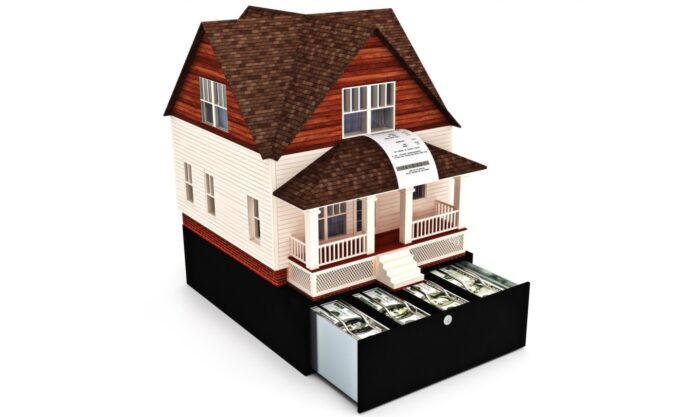Written by Jeff Lazerson
“Let the good times roll” might be the perfect tagline for credit card companies financing consumer debt in 2022.
With consumer debt piling up, many homeowners might be unaware their home equity could offer lower interest rates and quicker debt resolution.
Call it a spending binge or spending bender. Thirty-five percent of Americans amassed holiday debt in 2022, according to an annual Lending Tree study. The average amount for those taking on debt was $1,549, the study says. That’s up 24% from last year and is the highest in the eight-year history of LendingTree’s survey.
Credit card balances increased by $38 billion in the third quarter of 2022 compared with the previous quarter, according to the Federal Reserve Bank of New York. Credit card balances increased 15% year over year in the same quarter, marking it the largest increase in more than 20 years.
The average credit card interest rate carrying charge is 19.2%, according to Money Geek. The average annual percentage rate or APR for a credit card cash advance is 25%.
Even though borrowing costs are much higher across the board (mortgages, auto loans and credit cards) than 12 months ago, equity-rich, consumer debt-ridden homeowners have choices besides astoundingly high credit card rates.
Home equity lines of credit (or HELOCS) along with seconds mortgages should be considered for those short of funds. These types of loans can completely wipe out credit card balances in short order — say less than six months.
While there is no telling how the funds were being spent, total home-equity lines of credit and closed-end second mortgages for the first nine months of 2022 was up 55.3% from the same period last year, according to Inside Mortgage Finance.
California homeowners took out more than $11 billion in HELOCs in the third quarter of 2022, according to Attom Data Solutions. In our region, Los Angeles County accounted for 9,865 new HELOCs, Orange County had 4,518, Riverside County 2,830 and San Bernardino County had 1,886, says the ATTOM report.
Outstanding HELOC balances stood at $322 billion at the end of the third quarter, the New York Fed says.
In general, depositories (banks and credit unions) are your best bet for tapping home equity. To my knowledge and experience, depositories don’t charge application fees nor do they charge any closing costs.
Many do charge annual renewal fees of say $75 to $100. They may also charge an early payoff penalty of perhaps $500 if you close the loan in the first three years.
So, let’s compare payments. For $30,000 of credit card debt racking up 19.2% in interest payments, a minimum interest-only payment (not paying back principal) would be $480. Switch to a HELOC interest-only rate at 8.75% and the payment shrinks to $219. While the term is typically 30 years, borrowers can cut that down incrementally.
The mental game a borrower should play with respect to the HELOC is to pretend they must still pay the entire $480 — as if it was the credit card rate. That way you are powering down the principal balance by paying an additional $261 toward the principal.
Fixed-second loans could carry a rate closer to 10%, but it’s fixed for the term, for example, 30 years. Moreover, all second lien rates largely depend on the ability to qualify, considering income and overall debts, the lowest middle FICO scores of borrowers, and remaining equity (property value minus total liens).
Depositories do tend to be more conservative regarding the total of the combined liens, income for qualifying purposes and the appraisal value. If the depository says no or won’t lend as much as you want, the mortgage broker community has access to more aggressive second-lien instruments. A borrower will likely pay a higher rate and have to pay closing costs.
For example, a borrower can get up to 90% cash-out on a second in the mortgage broker community. Depositories tend to be far more conservative. For self-employed borrowers. you can also get a $1 million second, qualifying on bank statements. Depositories don’t entertain income based on net bank deposits.
A note of caution on those interest payments.
“Mortgage interest that is deductible is related to “buying, building or substantially improving your home. You cannot deduct mortgage interest to pay off credit card debt,” said Dr. Danielle Lazerson, assistant professor of accounting at San Jose State University. (Proud disclosure: Danielle is my daughter.)
“With the knowledge that the debt is not erased and still has to be paid off, it is a good idea to lower your overall interest rate. The interest (paid) would not be tax deductible regardless since it is credit card debt. It is better to have a lower rate overall,” said Danielle Lazerson.
So, shop around. Do a Google search for the cheapest HELOC rates available, for example. Ask for recommendations from those you trust. Depositories may match the price or beat a competitor’s written quote. If you have bank accounts, stock accounts or retirement funds that you might be willing to move over, chances are the bank may further knock down your borrowing rate.
“The key is if you do this, you don’t want to run up your credit cards again,” said Rick Sharga, executive vice president, Attom Data Solutions.
Freddie Mac rate news
The 30-year fixed rate averaged 6.48%, 6 basis points higher than last week. The 15-year fixed rate averaged 5.73%, 5 basis points higher than last week.
The Mortgage Bankers Association reported a 13.2% mortgage application decrease from two weeks earlier.
Bottom line: Assuming a borrower gets the average 30-year fixed rate on a conforming $726,200 loan, last year’s payment was $1,432 less than this week’s payment of $4,581.
What I see: Locally, well-qualified borrowers can get the following fixed-rate mortgages with one point: A 30-year FHA at 5.625%, a 15-year conventional at 5.25%, a 30-year conventional at 6%, a 15-year conventional high balance at 5.625% ($726,201 to $1,089,300), a 30-year high balance conventional at 6.5% and a jumbo 30-year fixed at 7.125%.
Note: The 30-year FHA conforming loan is limited to loans of $644,000 in the Inland Empire and $726,200 in LA and Orange counties.
Eye catcher loan program of the week: A 30-year jumbo, locked in for the first five years at 5.375% with a 0.75-point cost.
Jeff Lazerson is a mortgage broker. He can be reached at 949-334-2424 or jlazerson@mortgagegrader.com.
Shared from OC Register











